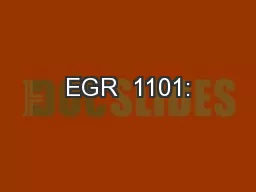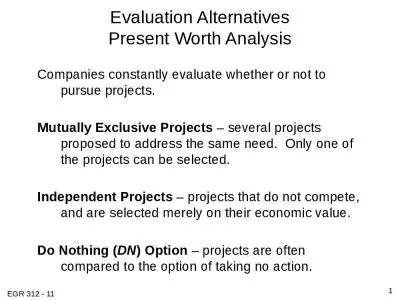PPT-EGR 1101:
Author : olivia-moreira | Published Date : 2017-03-19
Unit 11 Lecture 1 Applications of Integrals in Dynamics Position Velocity amp Acceleration Section 95 of RattanKlingbeil text Differentiation and Integration
Presentation Embed Code
Download Presentation
Download Presentation The PPT/PDF document "EGR 1101:" is the property of its rightful owner. Permission is granted to download and print the materials on this website for personal, non-commercial use only, and to display it on your personal computer provided you do not modify the materials and that you retain all copyright notices contained in the materials. By downloading content from our website, you accept the terms of this agreement.
EGR 1101:: Transcript
Download Rules Of Document
"EGR 1101:"The content belongs to its owner. You may download and print it for personal use, without modification, and keep all copyright notices. By downloading, you agree to these terms.
Related Documents














